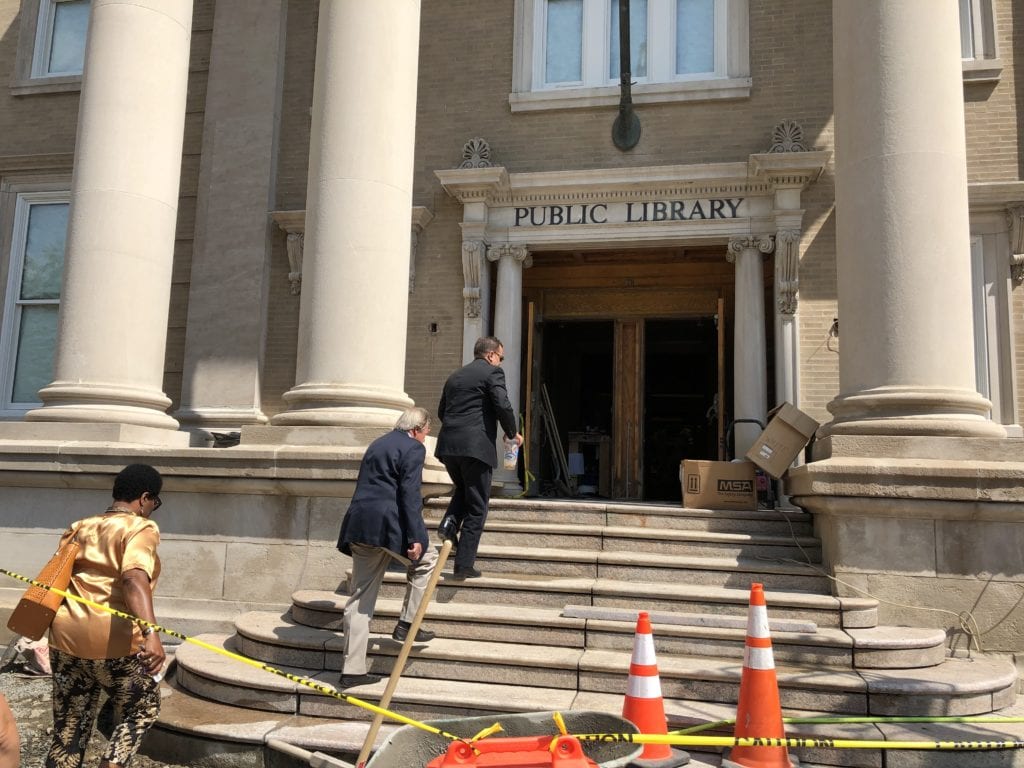
SUNY Broome’s new Culinary Art AOS degree program has many perks, from fascinating classes to the ability to hone your skills in the field.
And, of course this one: “It’s the only degree program where you can eat your homework,” joked Dr. Rey Wojdat, chair of the college’s Hospitality Programs, as he led the Binghamton Rotary on a tour through SUNY Broome’s future Culinary & Event Center (CEC).
Once open in the Spring 2020 semester, the CEC will house the college’s popular Hospitality programs, which include Culinary Arts, Event Management, Lodging and Casino Management, and Restaurant Management. An online Hospitality Management degree program is also currently in the works, Dr. Wojdat said.
Hands-on applied learning is critical in the hospitality industry, which is why a top-notch learning environment is such an asset. “We’re creating critical thinkers who are willing to work,” Dr. Wojdat said.

Learn more about SUNY Broome’s new Culinary Arts program.
The project was years in the making, and Dr. Wojdat credited SUNY Broome President Kevin E. Drumm for his vision, and Vice President for Administrative and Financial Affairs Michael Sullivan for sewing together the complex funding for the $20 million project.
On Sept. 3, the historic building echoed with the sounds of construction, as workers continued to transform the formerly library into a top-notch hospitality training center. Originally build in 1903 in the Classical Beaux-Arts style, the building contains many historic touches, from the plaster to the painstakingly restored woodwork, a terrazzo floor with a Grecian key pattern, and two faux fireplaces in the main-floor student lounge.

“The project actually causes urban regeneration,” said Dr. Wojdat, who studied the impact of the facility for his doctoral dissertation. “And the building is magnificent. It has a history that really extends to a lot of people’s childhoods.”
Some of the features were damaged in the 18 years the building stood vacant and were recreated as a result, such as the iron balcony railings with their ornate swirling pattern. Others were new although they maintained the classic look, such as the period-style doors awaiting installation and the subway tile in a downstairs bathroom.
An airy space on the top floor will become a destination for weddings and other events, providing the facility with a revenue stream. A computer lab, student lounges and faculty offices – Dr. Wojdat chose the one with the exposed brick – are all taking shape, as well as a formal dining room and a cocktail lounge under a striking skylight. The facility will be heated by a high-efficiency computerized boiler system that can be controlled remotely, and includes an addition in the back that will function as the main entrance.

Awaiting installation but sure to be a major highlight are the kitchen facilities and production labs. These include a beverage instruction lab, where up to 16 students at a time will learn the ins and outs of mixology on top of the line equipment. Fun fact: the mixology lab also contains the Carnegie Library’s old safe, which will be turned into a historical display.
A Continuing Education kitchen will accommodate up to 14 students and is less commercial in focus, more suited to community classes, Professor Wojdat explained. There’s a demonstration kitchen with tiered seating that can seat 26, as well as recording capabilities for asynchronous learning, podcasts and Youtube.
Side by side, a pair of production kitchens will offer a range of amazing amenities, including video screens that allow all students to view the instructor. These kitchens are changeable and can be adapted to a wide range of courses – in essence, doing the job of multiple kitchens at larger schools.

“To me, this is amazing. No one has this kind of stuff anywhere,” said Dr. Wojdat, as Binghamton Rotary members explored one of the production kitchens with an impressive window view of downtown Binghamton.
The Culinary & Event Center – and the programs they house – aim to be “avant-garde and cutting edge,” he said. One example: The program will feature a class in bean-to-bar chocolate-making that is sure to be a draw.
“We’re hoping people come back to enrich their skills. There’s a drastic need,” he said.


